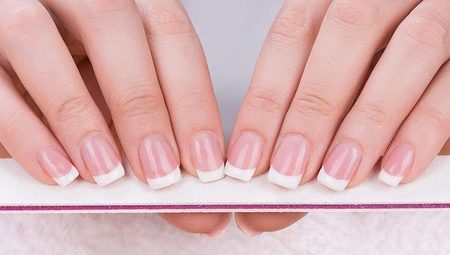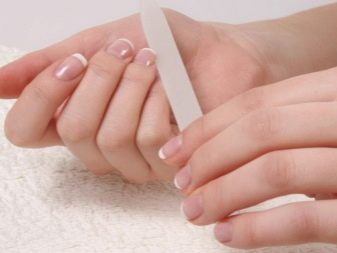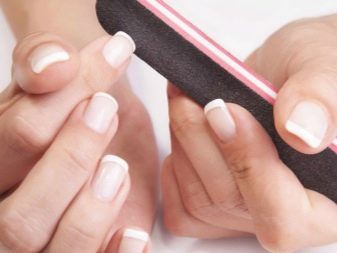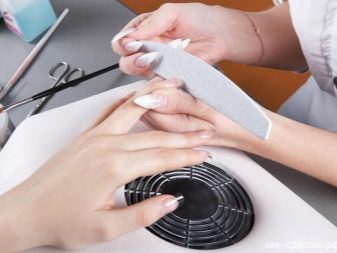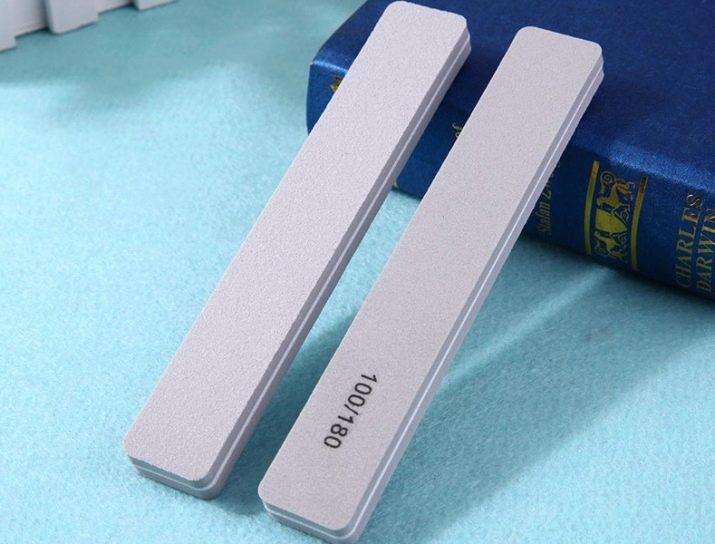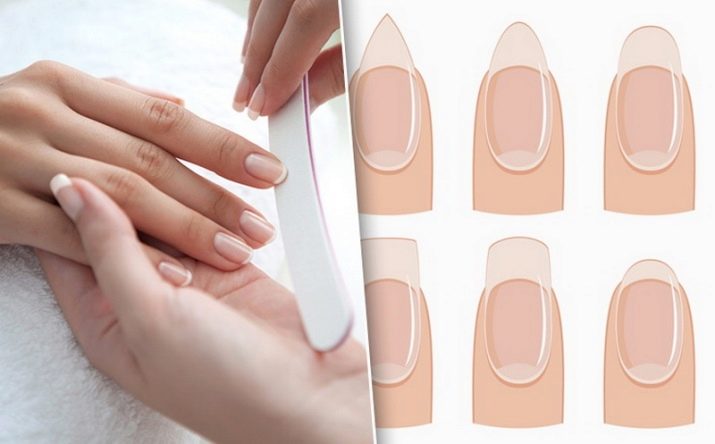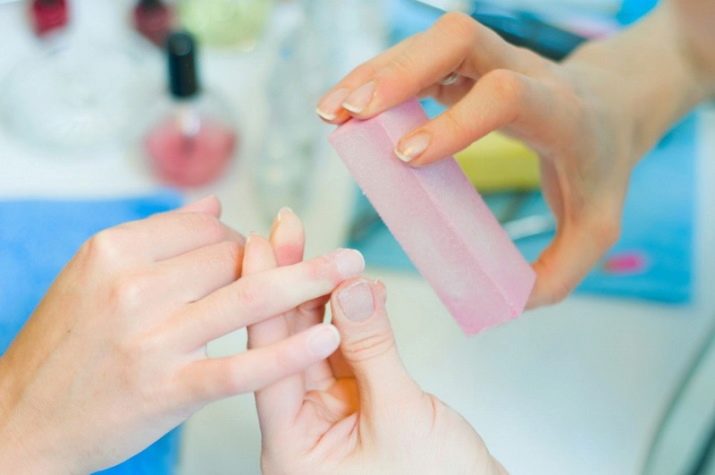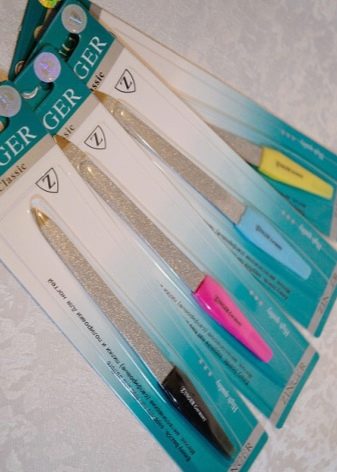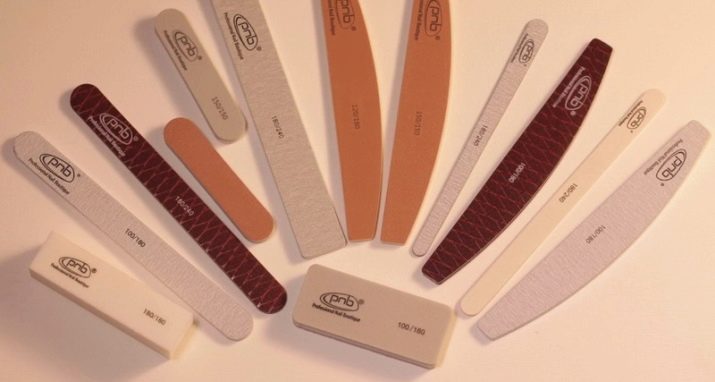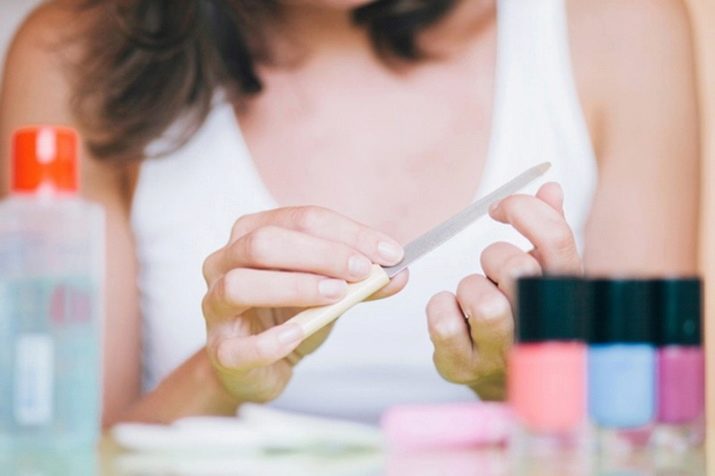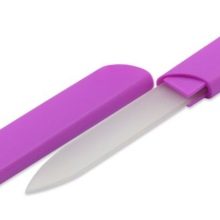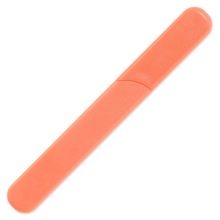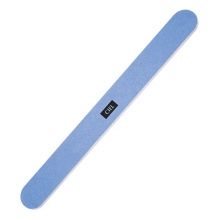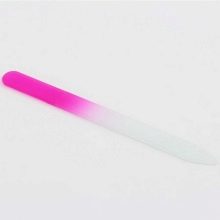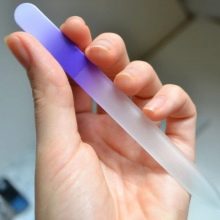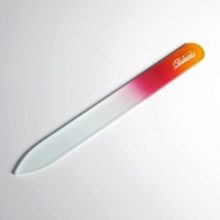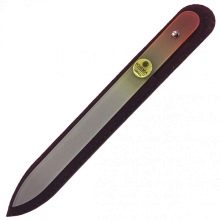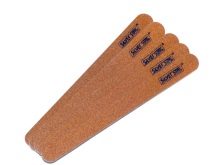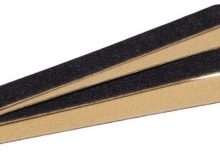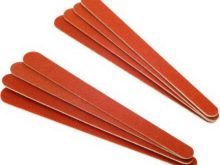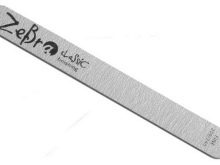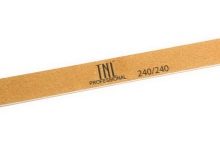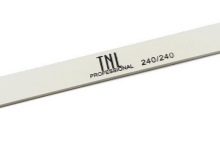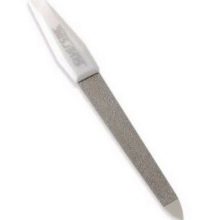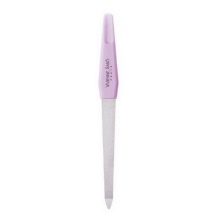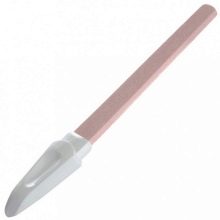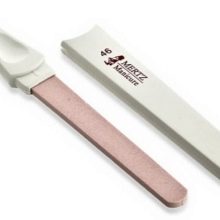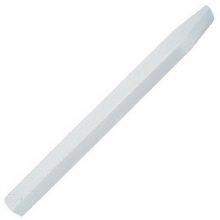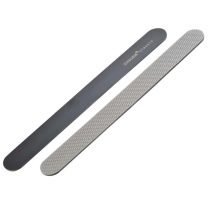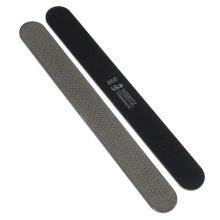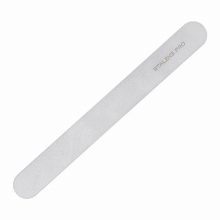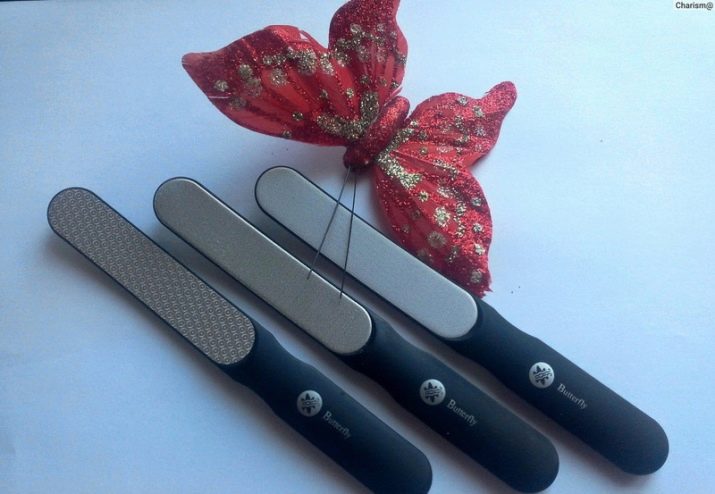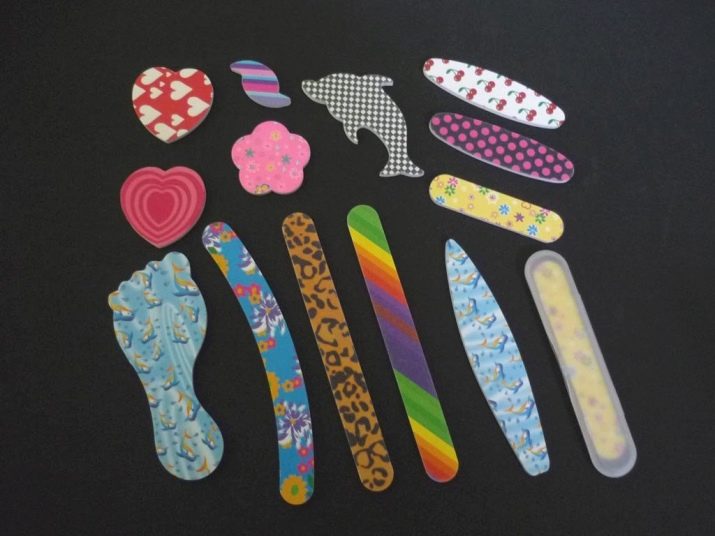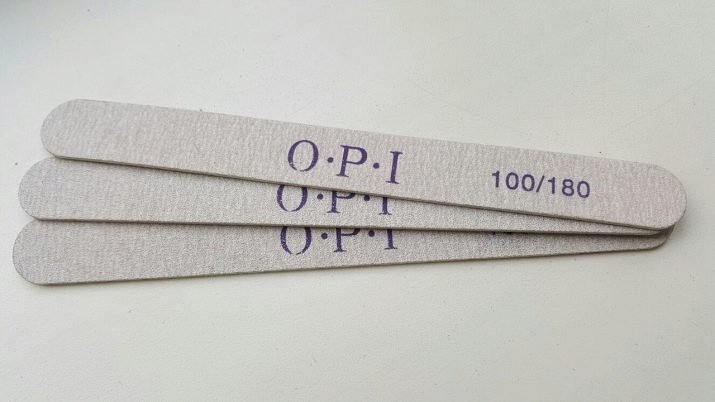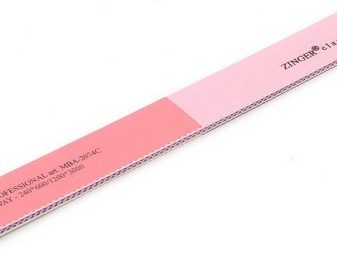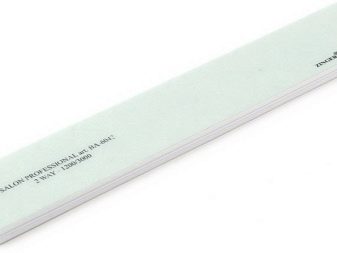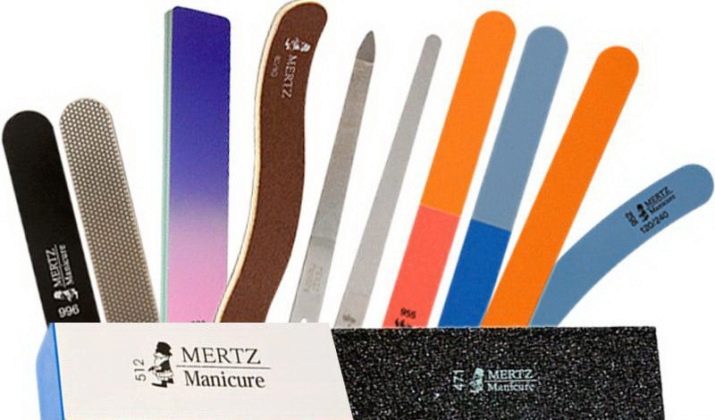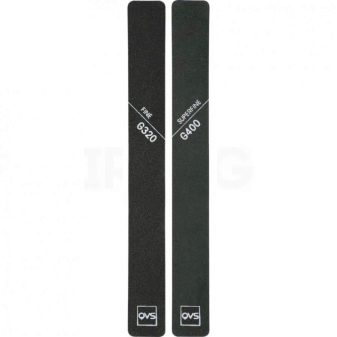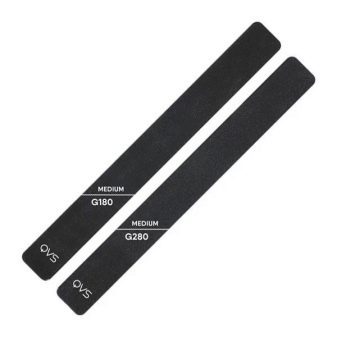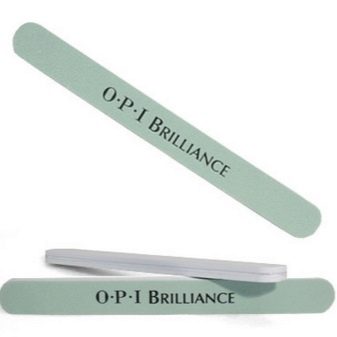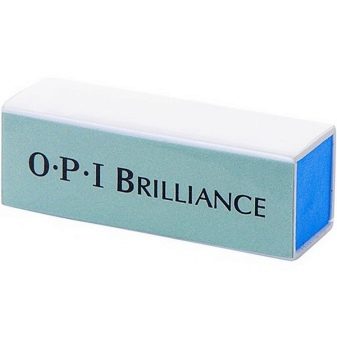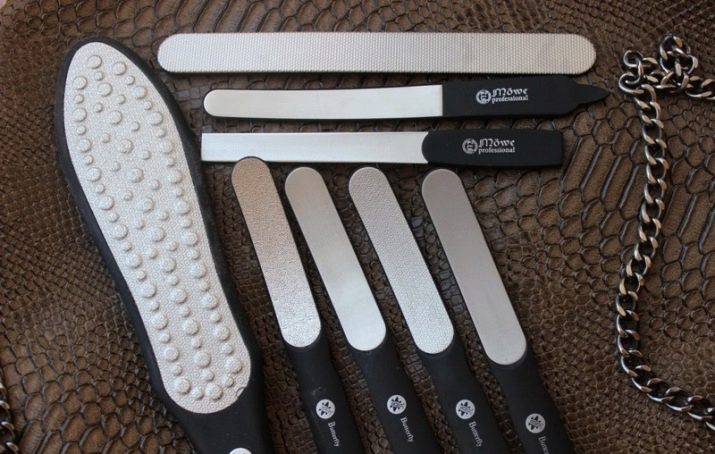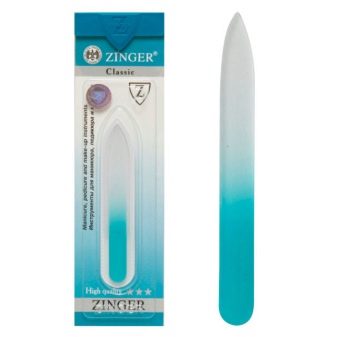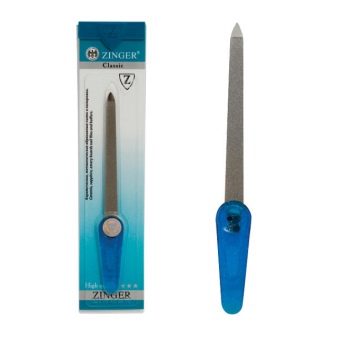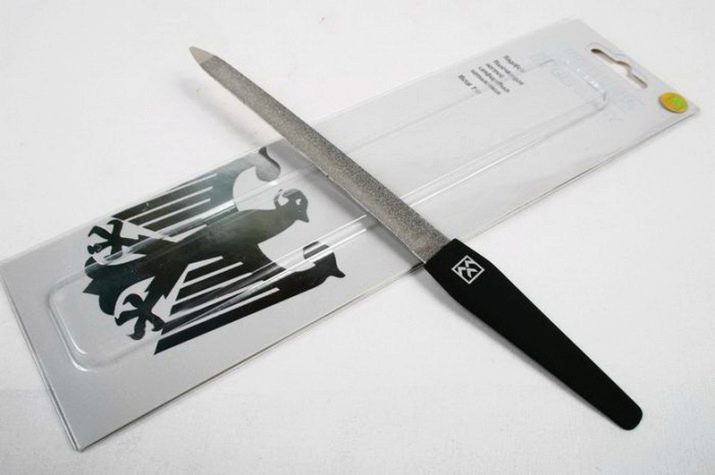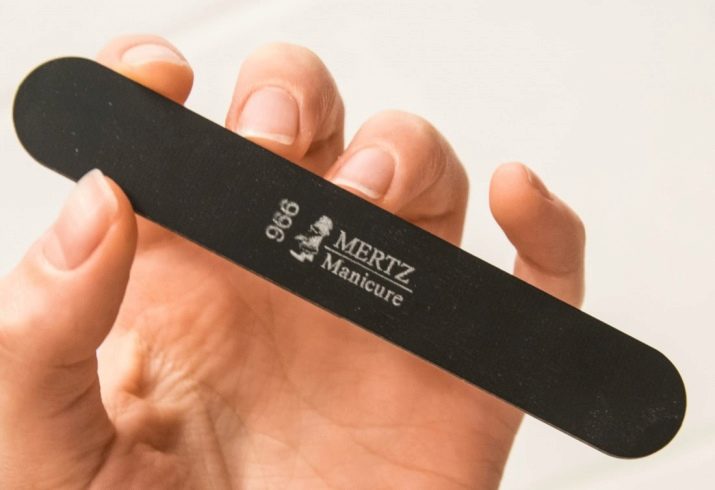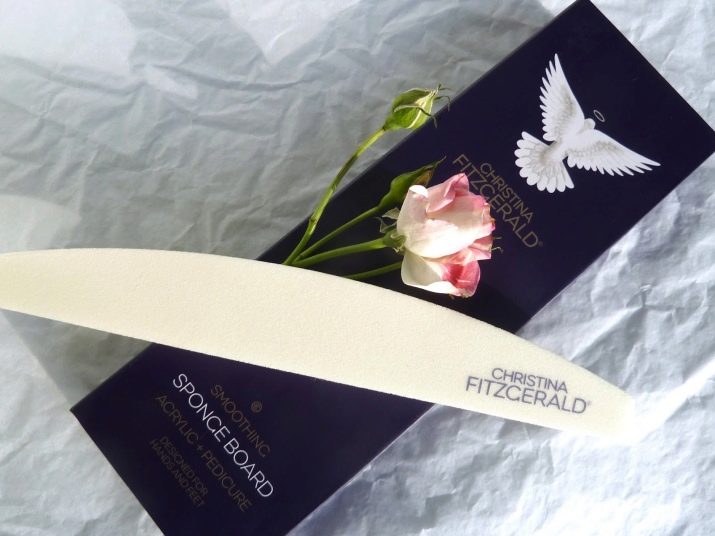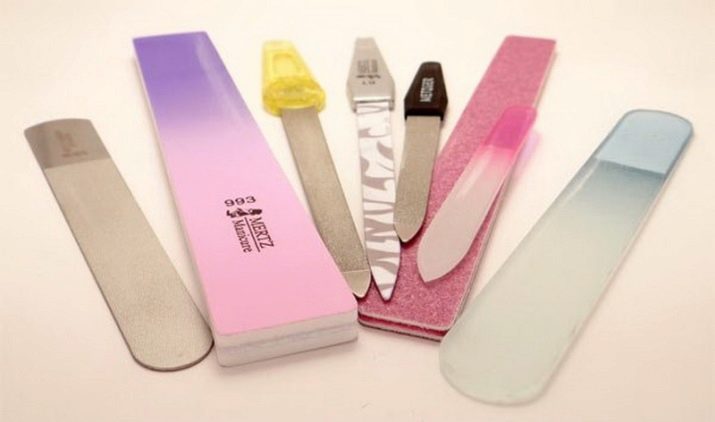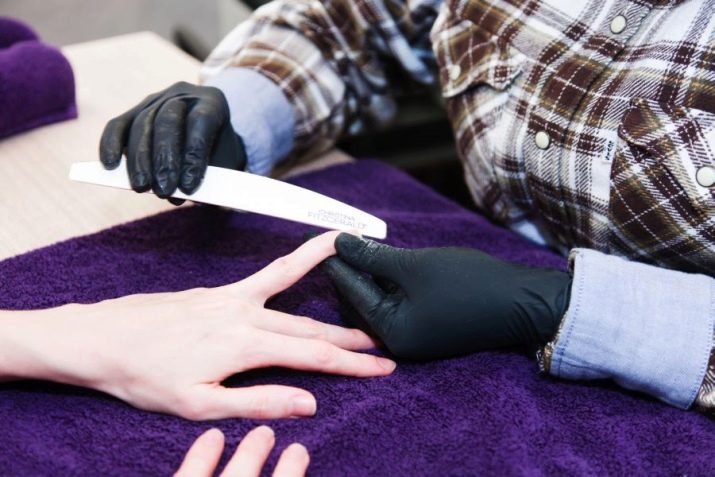In the process of nail care at home or while receiving services in the salon, nail files act as the main working tools. This product has its own characteristics, in addition, it is divided into types, where each product has its own individual characteristics. Therefore, having a complete understanding of certain properties of the product, you can easily choose the most suitable tool for a manicure that can cope with the task.
Features
It is rather difficult to make a beautiful manicure at home or by using a wizard in the salon without using a basic set of tools, which includes a nail file.
Today the range of this category of tools is represented by a wide variety., thanks to which the nails can be put in order, as well as strengthened, armed with high-quality and suitable products from Russian or foreign manufacturers. The main purpose of the nail file is to correct the shape and length of the nail, but over time and the introduction of new materials into the nail service, the functionality simultaneously with the product range has significantly expanded.
Salon specialists recommend shortening the length of the nail without using pliers or scissors, and use a good nail file that will eliminate the formation of microcracks on the nail plate, as well as protect the nail from delamination along the edge.
In the light of the versatility of modern nail files, you can highlight their main feature, which is that this tool today occupies a special place in the list of products used for home hand care, as well as for the wizard’s work not only with natural but also with artificial extensions. materials, means for design and care.
Kinds
Due to the introduction of new technologies in manicure, as well as the use of new materials and methods, the number of basic tools, including files, has significantly increased. Today, the tool can be classified, taking into account the basic characteristics of the product, such as: the task that the tool must perform during the work, the type of raw materials used to make the tool, and the degree of abrasiveness, which depends largely on the type of material from which the file is made nails.
To destination
To the master or amateur, it was easier to choose for the care of the nail plate of a particular tool in the presented range, for classification by functionality it is customary to rely on the shape of the product itself.
- As for the usual oval nail file, it is used to correct the shape of the nail plate, in addition, with the help of this type of tool, you can shorten its length.
- A rectangular product has a universal purpose, similar to an oval tool, but, in addition to standard procedures for creating shape and length, you can sand a natural or artificial nail with a rectangular file, remove excess gel, and make a flat surface.
- The tool, which in everyday life due to its shape is called “banana” or “boomerang” is recommended to be used for home hand care. The file is distinguished by its convenience due to the concave edges, which eliminates the slipping of the tool during operation.Most often, the "banana" give the nail a rounded shape, in addition, the file can be used to correct the applied layer of the accumulated synthetic material.
- Saws in the form of blocks that have a second name - buffs, acquire for polishing the surface of a natural or artificial nail. As a rule, this type of tool can be used from several sides: usually, the buff has six working zones that are distinguished by varying degrees of abrasiveness, in light of which it is necessary to use the tool for grinding in a certain sequence.
- For professional nail service professionals known brands that specialize in the production of tools for manicure, produce dome-shaped and diamond-shaped nail files. With their help, the final correction of the appearance of the nail plate, including gel polishes, acrylic, gel and other materials is carried out.
- In addition to the above types, on sale you can also find a tool of irregular shape. Most often, a similar attribute for manicure care is acquired by adolescents or children.
According to the materials
Taking into account the type of raw materials from which the working tool for the master is made, the files can be different. During the selection of the most suitable material should be guided by the state of the nails, as well as the general sensitivity to mechanical contact with the plate. For brittle and thin marigolds, select sparing materials with a minimum degree of abrasiveness should be selected; for artificial coating, a stronger working tool will be needed. The main types of files are presented below.
Plastic products
A similar category of products for nail care belongs to the category of budget manicure tools. The surface of such a file is not rigid, so this option should be used for natural nails that are thin in nature.
Glass tools
This kind of stand out among analogues of its fragility, because it is very fragile. Most often, such products are sold together with a storage case, however, careful handling of such a product is a prerequisite during operation. The main purpose is considered to be the care of natural nails.
Crystal File
Such an attribute in the domestic nail salons while not common. However, the high efficiency of such tools causes their gradual appearance in Russia, especially due to the fact that they polish the surface of the plate very well, smoothing out possible defects at the initial stage of delamination. The properties of this type of tool characterize it as grinding products with a soldering effect.
Wooden crafts
They belong to the segment of products with an average cost, some masters say a lot of positive effects from the use of tools on a natural basis. The file perfectly copes with its task, therefore it is used in salons and at home.
Textile-based tool
Such options stand out against the background of other types of their plasticity and high cost. As a rule, the inner part of the product is a plastic or wooden part, and at the edges the file is made of special fiber.
Metal products
Until recently - the most popular manicure instrument, which was carried out correction and polishing nails at home and in salons. But in the course of the emergence of more versatile and modern analogs, such a nail file was used extremely rarely, as it rather damages the nail plate, and is also able to leave deep scratches on it. But in terms of grinding tools for artificial nails, it fits perfectly, in addition, such equipment is quite durable.
Silicon or ceramic products
Recommended for the correction of ends of nails.These nail files can minimize stratification, and the granular particles deposited on the surface are able to sand the existing defects on the plate.
Laser saws
A modern and yet expensive tool, which is most often purchased for work in the conditions of salons. In the course of working with such a product, there are no restrictions concerning the direction of work, so grinding is done at the request of the master. In addition, laser nail care options have the ability to adjust the shape and condition of the inside of the nail plate.
A fairly new type of laser tool is the diamond coated version., with which you can simultaneously remove the cuticle. Contact with the nail is very soft, but the level of efficiency of the work done is high. The diamond file is a universal model, since it can work with various artificial materials, as well as process dead skin on the sides of the nail. However, in this matter it is important to deliberately select the degree of graininess of the instrument.
Manicure Cardboard Tool
Such files can be different in degree of granularity, as well as intended for single or multiple use. The latter option is possible only in the case of individual operation, since such a tool cannot be disinfected after use. As a rule, for their manufacture, special coated cardboard is used.
Buffs
This tool has 2.4 or 6 working sides, is used for the final correction of the shape and condition of the plate. Most often, the tool is used for polishing, for example, after removing the gel polish, when the plate is covered with small grooves.
Stiffness
In order to determine such a characteristic of a tool as stiffness, one should pay attention to the markings that are set by the manufacturer of their products. Based on this property, you can determine the abrasiveness of the file, and also accurately choose which nail plate the file can be used for. The unit of abrasiveness is considered to be grit. Today, products are presented in the following versions:
- 80 - this indicator indicates the maximum rigidity of the tool;
- 100 - such products are also distinguished by a high level of surface hardness;
- 120, 180, 220, 240 - files with an average degree of rigidity;
- 300, 320, 400 - such tools are classified as soft.
For the accumulated material, specialists use tools with abrasiveness within 100/180 grit, since such a composition as acrylic or gel cannot be processed with soft nail files. Files with a rough side of 80 or 100 grit, as a rule, shorten the length, and also get rid of excess material that could accumulate on the end surface of the nail, forming unattractive mounds. Then comes the turn of processing tools that have a more sparing degree of grain.
The last version of nail files is recommended for working with natural nails; Some tools have two work surfaces with varying degrees of abrasiveness, but the harder side is usually applied on artificial formulations such as acrylic, gel or gel polish. However, despite its softness, tools of this class can effectively remove irregularities on the plate. To add shine, the polishing side of the instrument should have a grain size of 280–320 grit. Some buffs can be made with sides whose abrasiveness will be 900 or 1200 grit. Such products are most often purchased for work in salons.
For polishing and grinding the minimum defects on the surface of the nail, you can use tools of medium hardness.
Which firm is better?
During the selection of a suitable tool in order to correct the shape and length, one should give preference to products from proven manufacturers who offer certified products.Files made from low-quality raw materials in violation of established standards can cause serious damage to the nail plate, in addition, it is unlikely that nails can be properly sharpened, and the use of products made in an artisanal way may pose a risk to overall health.
Among the most sought-after brands that, according to customer reviews, have proven themselves on the positive side, it is worth highlighting such tools.
- QVS glass filewhich is recommended for working with brittle natural nails. The surface of the tool has a fine-grained surface that gently polishes the plate. During operation, products demonstrate durability, provided proper operation. The tool belongs to the class of available goods, because it has an average cost in its segment.
- For professional manicure business there is a market Brilliance saw file. This tool can be used not only with artificial materials, but also for the correction and polishing of natural nails. The main advantage of the product is its affordable cost, as well as its efficiency at work, because the tool provides a beautiful shine, but at the same time it carefully affects the structure and upper layers of the nail.
- In the list of modern laser nail files for nails brand Butterfly. The tool quickly and gently handles the nail, without damaging the surface. In addition to laser tools, wave files for natural nails are very popular.
- Zinger It offers customers a wide range of products, including professional glass and metal nail care products. In addition, in the existing range of this brand are many bilateral tools for home use; The most popular tools are 100/180 and 150/220.
- Among the laser tools also stands out Messer & Nagel MN-1503 tools. The nail file combines several functions, as it can be used not only for the correction of nails, but also during the procedures for performing the unedged or combined manicure.
- Products for manicure Mertz earned high marks among the masters; This brand offers a tool for nail care, in addition, it can be used to safely remove the cuticle. The range of products contains laser and metal tools, as well as electric saws with replaceable files.
- Christina fitzgerald - a brand that offers the consumer a large selection of glass and satin files, in addition, the brand produces a series for the care of natural nails with an average and soft degree of abrasivity.
How to choose?
During the selection of such a tool for home or professional use You should pay attention to the following characteristics of the tool.
- First of all, it concerns the degree of rigidity, perhaps, for quality care you will need several files at once, which will need to be applied at different stages of working with nails. In order not to be mistaken in this matter, it is necessary to select a suitable surface by touch. If the tool is too hard, within 80 or 100 grit, then there is a chance after such a procedure to seriously damage the plate by removing several upper layers. For those who doubt their own choice, you can initially buy a tool with a grain size of 320 grit - after using it you will already understand what kind of nail file to get: with a greater or lesser abrasive surface. And soft products in any case useful for polishing and correction, as well as for finishing any artificial material or natural surface.
- It is also important initially to clearly define the purpose of the use of products.Because, only taking into account the type of material with which you have to work, you can choose the right tool. To remove artificial materials such as acrylic, a rough surface is necessary; as for gel varnish, in this case it is worthwhile to give preference to the average value of the grain. Correction of the accumulated material is best carried out with files of 160 or 180 grit.
- Attractive appearance of products, bright design and colors do not always indicate the high quality of the files. You should also give preference to well-known brands that have earned a reputation for quality products sold throughout the world.
- As for the selection of files for working with natural nails for personal use, you can spend a little test: try to bend the regrown nail. If it is easily yielded, then the nail plate will not withstand the effects of an overly aggressive tool surface. For such cases, you should opt for soft files. When the nail can be bent with difficulty - you can use files of medium grain, for example, a tool with a diamond-coated.
How to use?
Before using the tool, It is best to get acquainted with some of the recommendations of experts.
- To perform the correction of the length and shape of the nails, you should begin work only if the nails are completely dry. Exposure to a still wet nail plate can lead to the opposite result when a nail that is too vulnerable is damaged.
- Almost all types of files require work in one direction, since chaotic movements can provoke the appearance of defects and serious chipping on the nails. The exceptions are laser tools.
- It is important, working on the shape of the nail, to carefully grind its edges; movements in one direction will help to “seal” the end, which will reduce the risk of cracks. However, too aggressive impact of the nail file on thin nails can lead to the opposite result.
- Final polishing should be done with the help of buff. This tool contains a soft side that will gently clean the surface and also give it a healthy glossy shine. Do not disregard the edges of the nail plate, which also need care.
- To smooth out the grooves or irregularities on the plate, which often occur after removing the artificial turf or expanded material, you should polish your nails with a buff, but no more than once every 14 days, since it will take some time to restore the natural layer. During this period, you can use additional reinforcing compositions based on nylon or silk.
To learn how to properly use nail files, see the next video.
